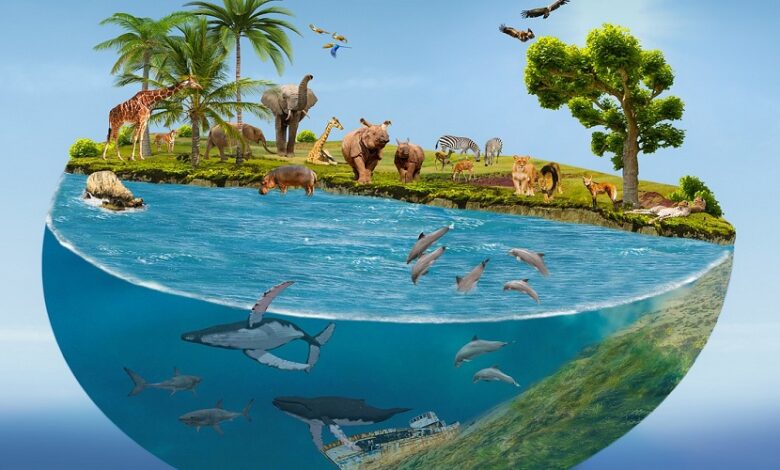International Day for Biological Diversity, not for that now we need to talk about it but relive with

By D N Singh (Exclusive)
The statistics speak for themselves. An estimated one million animal and plant species are threatened with extinction. Around 100 million hectares of tropical forest were lost between 1980 and 2000. Animals that are front and centre in our culture are fading fast in reality. We live in a world where giraffe teething toys are far more prevalent than their real-life counterparts.
After nearly losing the scope of a much required symbiosis with the nature now most of us and our experts start injecting wisdom in hind sight. Like a saying in Hindi ‘Sab kuchh loota ke hosh mein aye to kya hua (if you come to sense after losing everything then it is of no point).
That candidly demonstrates the pathetic departure of human from the nature which in a way is the elixir of life.
The human being, it is assumed, is the most intelligent being on earth. There are other intelligent species, all have a good measure of intelligence, but none have the features that enable such diverse qualities and abilities as the human being.
Like all other species the human being is a product of nature and is sustained by it. Nature has been most gracious to this species perhaps because it has the acumen to safeguard its interest and protect the flora and fauna it provides for.
In the tribal populations we notice many traits that are missing in the modern urban populace. The tribal revere nature, consider nature to be God, and feel it is their duty to protect the earth. Having worked with the tribal one learns to respect their cumulative knowledge and the way they have identified with the natural world surrounding them.
Living with nature can be harsh but it allows people to be simple and straightforward. The tribal will not lie because they do not feel the need for it. Living with nature grounds people and provides a balance. Such people have very few needs and live spartan lives. They have very deep convictions and sharpened powers of observation.
The main problem with the vast majority living in the modern world is that they have completely lost touch with nature and its cycles. The modern civilization feels that nature is an adversary that needs to be vanquished and that an artificial world will be more conducive.
In this separation from nature lies the neglect of man and his downfall.
What caused the separation from nature and the change in mentality? The industrial revolution. Ever since this development nature became an input to be processed in the quest for comfort.
While the industrial revolution began with the impression that human beings would be benefited, it actually began to sideline them. Slowly began a trend that the human is a slave species and the machine is better.
The machine did not say that it is better. Who said that? Those that built the industries. Powerful human beings. The industrial society provided the impetus to this group to dominate, become more powerful, and employ the human resource for their benefit.
Then began an era of neglect of the natural world, human beings, and also the qualities that distinguish the human beings from other species.
The arts that flourished, the quest for knowledge, was replaced by a new subject named science that captivated the masses mostly because it became sine qua non for lucrative livelihoods. The objective of this science, married to the industry, seems to be mindless material growth at the expense of natural resources disregarding every concern that comes its way.
We need to talk about nature. But not because today is the International Day for Biological Diversity. We shouldn’t need an awareness day to remind us how important biodiversity is.
Over the past few months, we have profiled some of the neglected species whose fortunes Fauna & Flora International (FFI) is helping to turn around. The take-home message, we hope, is that giant snails, pygmy hippos, dragon trees, sturgeons, Caribbean reptiles, cao vit gibbons, Kyrgyz tulips and Siamese crocodiles are not only worthy of attention in their own right, but also integral to the bigger picture.
And that picture isn’t a pretty one. We’re systematically unpicking the threads that make up the warp and weft of life’s rich tapestry. That includes not only the carefully delineated individual figures, from majestic elephants, tigers and baobabs to anonymous arthropods, but also the intricate detail of the all-important backdrop – the forests, grasslands, peatlands, wetlands and seascapes – without which the entire showpiece would fall apart.
The statistics speak for themselves. An estimated one million animal and plant species are threatened with extinction. Around 100 million hectares of tropical forest were lost between 1980 and 2000. Animals that are front and centre in our culture are fading fast in reality. We live in a world where giraffe teething toys are far more prevalent than their real-life counterparts.e-live






